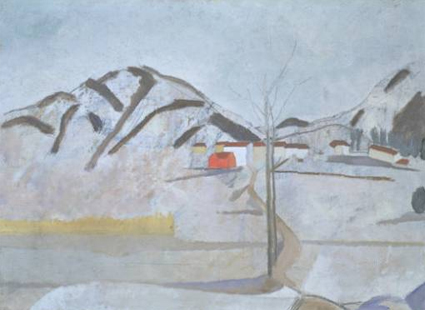Ben Nicholson was a victim of his own caution. Even his most impressive works seem tainted by pastiche, Andrew Graham Dixon argues
William Nicholson, elegant Edwardian painter of elegant Edwardian still lives, never did much like his son Ben's pictures. ''Your paintings came at last with 80 something francs to pay on them,'' Nicholson senior wrote sniffily in 1914 to Nicholson junior, then 18 years old, who had sent some examples of his work home from abroad. ''The pictures frightened me a good deal they were so abnormal and they seemed to me the work of an untrained eye, both in colour and form. They have however a certain depressing distinction . . . Draw draw - only draw.''
''Ben Nicholson,'' at the Tate Gallery in London, sets out to consecrate Nicholson junior as the Oedipal hero of modern English painting: the artist who liberated himself not just from the influence of Nicholson senior but from all that he stood for in terms of the stuffy, conservative, well-mannered world of early 20th-century English art; the artist who cut loose and broke free from dun and dreary and parochial fatherland and who dared to step into the blinding white light of European modernism. In fact, the exhibition is an intriguing failure. It demonstrates that despite what the young Nicholson described as the need to ''break away from my family ptg painting tradition'', Ben always remained William's son.
Nicholson junior might have eschewed Nicholson senior's techniques, avoiding rich wet impasto and stolid academic drawing, but he did inherit his father's nonchalant facility and his ability to turn out quantities of perfectly unobjectionable and perfectly tasteful pictures by rote. Nicholson (like his father) painted almost no pictures that could be described as outright failures, but his consistency was inseparable from his greatest failing....


